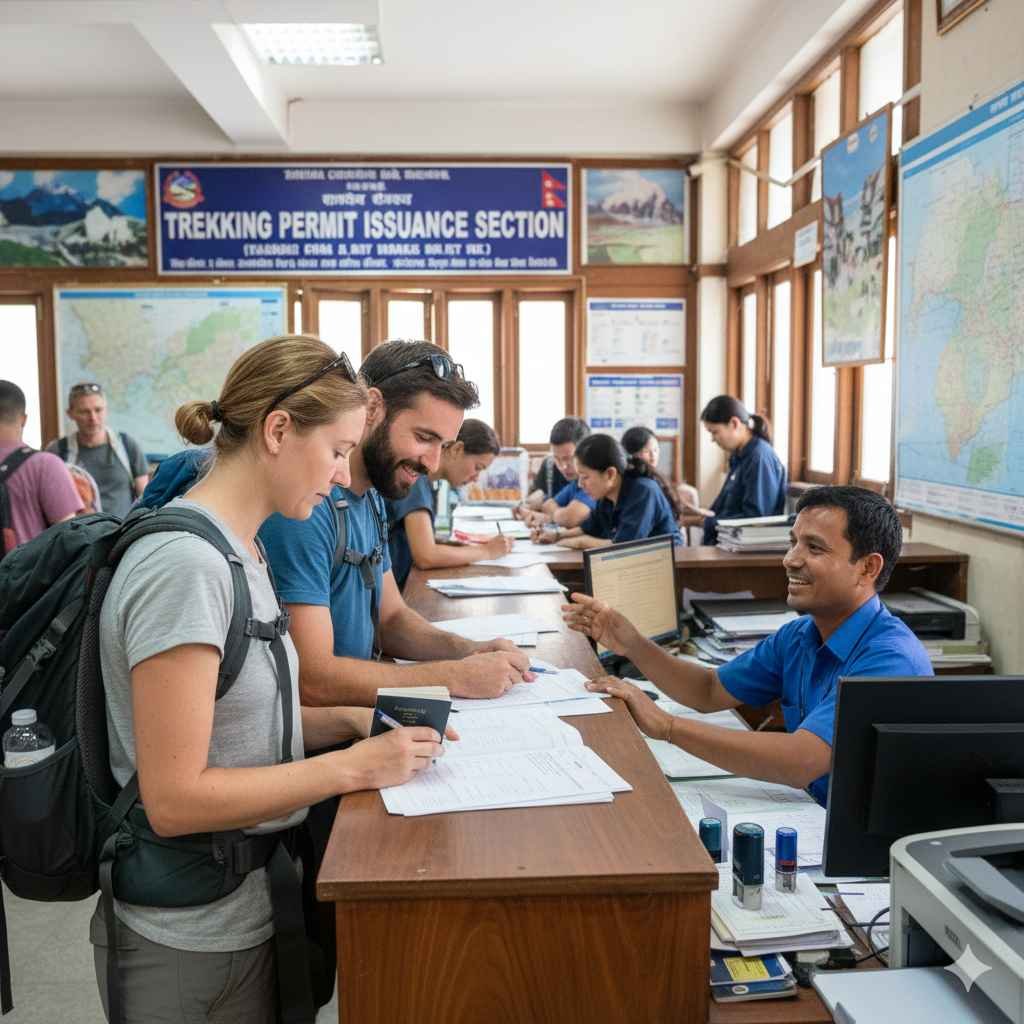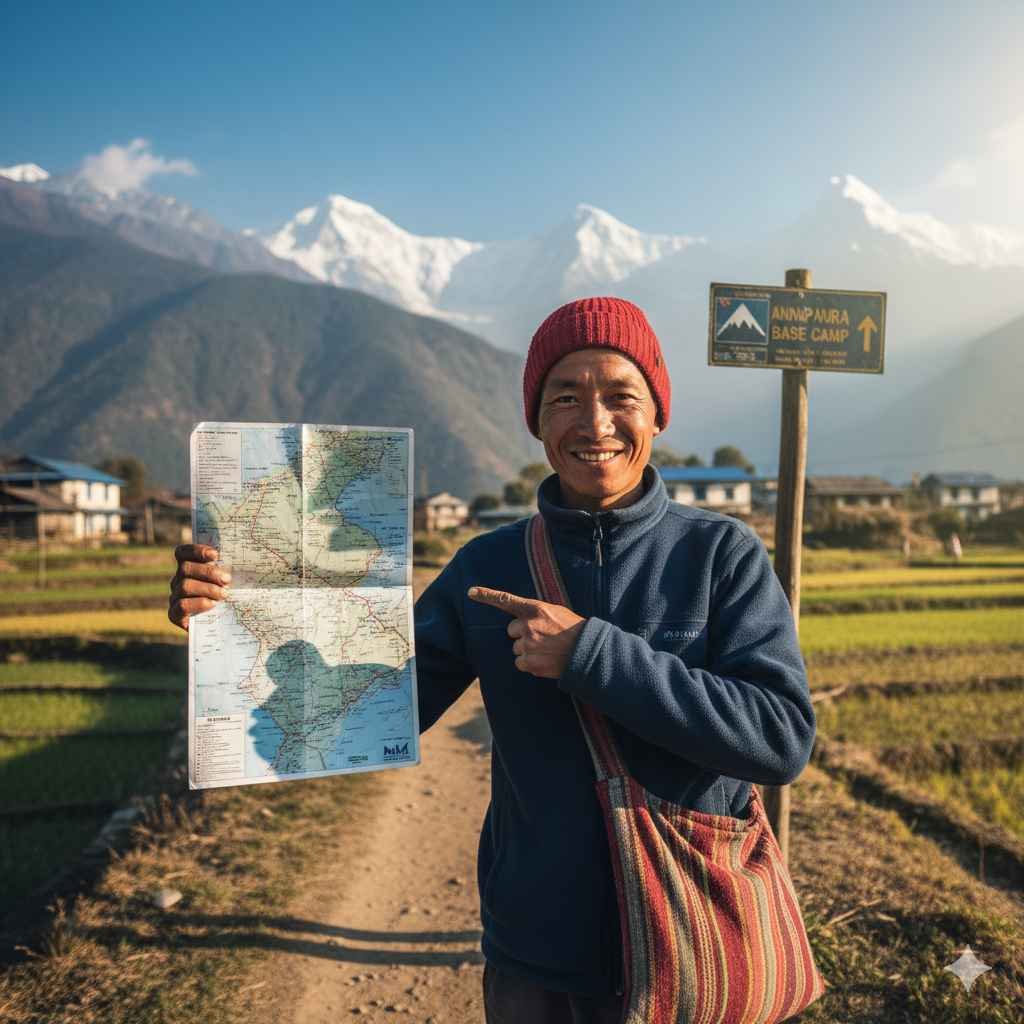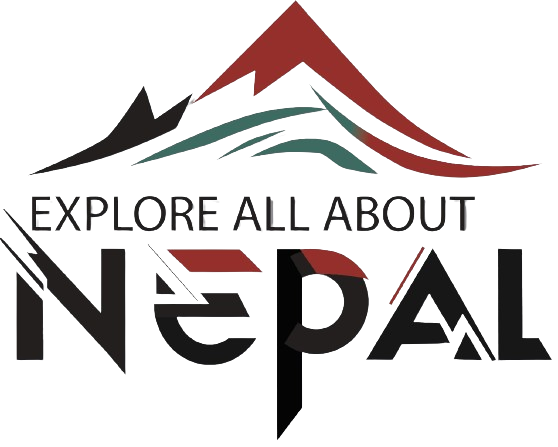Nepal is one of the few places on earth where the mountains are not just scenery they are a way of life. From the mighty Everest to the serene Annapurna trails and the remote valleys of Dolpo, trekking in Nepal is more than an adventure; it’s an experience that stays with you forever.

But before you set off into the Himalayas, there’s one crucial thing every trekker must do: get a trekking permit.
If you’ve been asking yourself “How to get a Mountain Trekking Permit in Nepal?” this in-depth guide is for you. We’ll explore why permits are needed, the different types available, how much they cost, where to get them, and insider tips to make the process smooth.
Why Are Trekking Permits Required in Nepal?
Nepal isn’t just selling access to mountains; it’s safeguarding them. Trekking permits are part of a bigger vision to balance adventure tourism with conservation and community support.
Here’s why the system exists:
Conservation: Trails pass through national parks and conservation areas. Permit fees go toward protecting endangered species like snow leopards and red pandas.
Community Development: A portion of every fee supports local schools, health posts, and infrastructure in mountain villages.
Safety & Record-Keeping: Permits help authorities track trekkers in remote regions. In emergencies like landslides or altitude sickness, having your details on record can save lives.
Controlled Tourism in Border Areas: Restricted region permits protect indigenous cultures and manage the sensitive border zones near Tibet and India.
So when you pay for a permit, you’re not just following the rules you’re investing in the land, the people, and the sustainability of mountain trekking itself.
Types of Mountain Trekking Permits in Nepal
Different regions require different permits. Depending on your destination, you may need one or a combination of the following:
1. TIMS Card (Trekkers’ Information Management System)
Required for most trekking regions except restricted zones.
Collects basic trekker information for safety and data tracking.
Cost: USD 20 for solo trekkers; USD 10 if in a group with a licensed agency.
Where to get it: Nepal Tourism Board (Kathmandu/Pokhara) or registered trekking agencies.
2. National Park or Conservation Area Entry Permits
If your trail passes through a protected zone, you’ll need this permit. Some of the most popular ones are:
Sagarmatha National Park (Everest Region) – USD 30
Annapurna Conservation Area (ACAP) – USD 30
Langtang National Park – USD 30
Manaslu Conservation Area (MCAP) – USD 30
Fees directly support conservation and park maintenance.
3. Restricted Area Permits (RAPs)
Restricted regions are culturally and environmentally sensitive. Trekking here requires a special permit, only issued by the Department of Immigration in Kathmandu.
Examples of restricted regions:
Upper Mustang – USD 500 for 10 days, then USD 50 per day.
Upper Dolpo – USD 500 for 10 days.
Manaslu – USD 100 per week during peak season (Sept–Nov), USD 75 during off-season.
Kanchenjunga – USD 20 per week.
Note: You cannot trek in restricted areas alone. A licensed trekking guide and agency are mandatory.
Step-by-Step: How to Get a Mountain Trekking Permit in Nepal
Getting a permit is simple once you know the process. Here’s a detailed breakdown:
Step 1: Choose Your Trekking Route
Start by finalizing your route. Each region has different requirements.
Everest Base Camp → TIMS + Sagarmatha National Park Entry
Annapurna Circuit → TIMS + ACAP
Manaslu Circuit → RAP + MCAP + ACAP
Upper Mustang → RAP + ACAP
Step 2: Decide How to Apply
You have two options:
Apply directly yourself in Kathmandu or Pokhara.
Use a trekking agency they’ll handle permits, guides, and logistics for a small service fee.
Step 3: Visit the Permit Office
Kathmandu: Nepal Tourism Board (Pradarshani Marg) and Department of Immigration (Kalikasthan).
Pokhara: Nepal Tourism Board (Damside).
Step 4: Submit Your Documents
A copy of your passport.
Two passport-sized photos.
Itinerary details (your route and dates).
Travel insurance details (optional but highly recommended).
Step 5: Pay the Fees
Carry cash in Nepali Rupees or USD. Most offices do not accept cards.
Step 6: Collect Your Permit
Permits are usually issued the same day. Double-check all details before leaving.
Personal Experience: Kathmandu vs Pokhara
Travelers often ask: “Should I get my permit in Kathmandu or Pokhara?”
If you’re trekking in Annapurna, Pokhara is easier. The NTB office there is efficient and less crowded.
For Everest or restricted regions like Mustang, it’s better to get them in Kathmandu since the Department of Immigration is based there.
I remember applying for my first permit in Pokhara after a short wait, the officer even gave me trekking tips about avoiding altitude sickness. It felt less like bureaucracy and more like joining a community of explorers.

Trekking Permit Costs in Nepal (2025 Update)
Here’s a clear cost breakdown:
| Permit Type | Region | Cost | Notes |
|---|---|---|---|
| TIMS Card | All major trekking routes | USD 10–20 | Group cheaper than solo |
| National Park Entry | Everest, Langtang | USD 30 | Per entry |
| Conservation Area Permit | Annapurna, Manaslu, Gaurishankar | USD 30 | Per entry |
| Restricted Area Permit | Mustang, Dolpo, Manaslu | USD 100–500+ | Depends on region & duration |
Can You Get a Trekking Permit Online?
As of 2025, trekking permits are still issued in person. However, trekking agencies can arrange permits in advance if you send them your passport copy and photos. Nepal is slowly moving toward a digital system, but for now, physical permits are standard.
Insider Tips for a Smooth Permit Process
Plan around holidays: Permit offices close during major festivals like Dashain and Tihar.
Bring extra photos: You’ll need multiple copies for permits, hotel registrations, and sometimes SIM cards.
Keep permits safe: They are checked at multiple points along the trail.
Carry small cash: Don’t rely on ATMs near trekking offices.
Restricted areas = guide mandatory: Budget for a guide if you’re heading into Mustang, Dolpo, or Manaslu.
Get insurance before applying: Many agencies ask for your insurance details when processing permits.
Cultural Insight: How Local Communities Benefit
When trekkers ask “Why pay for a Mountain Trekking Permit in Nepal?” the answer lies in the villages you’ll pass through.
In Annapurna, for example, ACAP funds have built schools, health posts, and even micro-hydropower plants that light up remote homes. In Manaslu, permit fees fund trail maintenance and waste management.
By buying a permit, you’re not just entering the mountains—you’re supporting the very people who welcome you with a warm smile and a cup of butter tea.
Seasonal Considerations for Trekking Permits
Permit costs usually remain fixed, but the trekking experience changes drastically by season:
Autumn (Sept–Nov): Peak season. RAP costs for some regions (like Manaslu) are higher.
Spring (Mar–May): Popular for rhododendron blooms, costs remain standard.
Winter (Dec–Feb): Trails are quieter, but some offices may operate on limited hours.
Monsoon (Jun–Aug): Few trekkers apply, but offices remain open. Expect leeches and rain.
FAQ: Mountain Trekking Permit in Nepal
Q1: Do all treks require a permit?
Yes. Even short hikes like Poon Hill require at least ACAP and TIMS.
Q2: Can I trek without a permit?
No. Checkpoints are strict, and trekking without permits may result in fines or being denied entry.
Q3: Can I extend my permit?
Yes. Visit the same issuing office if your trek takes longer than planned.
Q4: Do children need trekking permits?
Yes, though some conservation areas charge reduced fees for minors.
Q5: How long does it take to get a permit?
Usually within 30 minutes to a few hours, depending on the office and crowd.
Getting a Mountain Trekking Permit in Nepal might feel like a formality, but it’s much more than that. It’s your contribution to protecting the trails, supporting the communities, and ensuring trekking in Nepal remains safe and sustainable for future generations.
By following the simple steps in this guide, you’ll know exactly how to get a Mountain Trekking Permit in Nepal whether you’re tackling Everest Base Camp, the Annapurna Circuit, or the mystical valleys of Mustang. So pack your documents, prepare some cash, and collect your permit with pride. With it, you’re not just a visitor you’re part of Nepal’s ongoing story of mountains, culture, and adventure.


